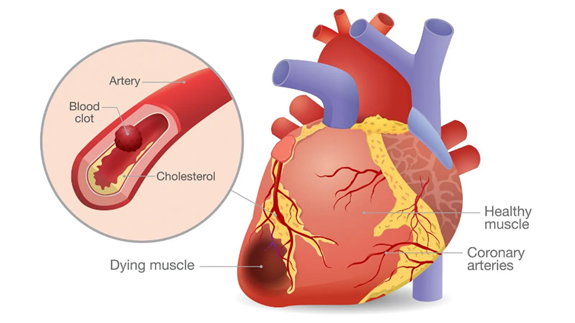A client diagnosed with end-stage renal disease tells the nurse he is afraid of dying from a heart attack. Which of the following responses should the nurse make?
"Perhaps you should discuss this with your physician."
"Of course, you aren't going to die, at least not in the immediate future."
"Tell me more about these fears of dying from a heart attack."
"I recommend you exercise daily and avoid smoking to decrease your risk."
The Correct Answer is C
Choice A Reason:
While suggesting the client discuss their concerns with their physician is a valid response, it may not provide the immediate emotional support the client is seeking. It's important for the nurse to address the client's current anxiety and provide reassurance before referring them to their physician.
Choice B Reason:
This response dismisses the client's fears and may come across as insensitive. It's crucial to acknowledge the client's emotions and provide a supportive environment where they feel heard and understood.
Choice C Reason:
Encouraging the client to express their fears allows the nurse to provide emotional support and helps in understanding the client's perspective. This approach fosters a therapeutic relationship and can help alleviate the client's anxiety.
Choice D Reason:
While recommending lifestyle changes is beneficial for overall health, this response does not address the client's immediate emotional needs. The nurse should first provide support for the client's expressed fears before discussing lifestyle modifications.

Nursing Test Bank
Naxlex Comprehensive Predictor Exams
Related Questions
Correct Answer is D
Explanation
Choice A Reason:
Providing sympathy can be comforting, but it may not always be conducive to establishing a therapeutic relationship. Sympathy involves feeling pity for someone else's misfortune, which can sometimes create a power imbalance or imply that the nurse sees the client as unable to cope. In contrast, empathy, which is understanding and sharing the feelings of another, is more aligned with therapeutic communication principles.
Choice B Reason:
Focusing on the words of the clients is important, but it is only one aspect of communication. Therapeutic relationships are built on understanding the full context of communication, including non-verbal cues and emotional undertones. Active listening involves not just hearing words, but also interpreting the message being conveyed and responding appropriately.
Choice C Reason:
Controlling the pace of establishing nurse-client relationships might be necessary in certain situations, but it should not be the primary action. Each client is unique, and the development of a therapeutic relationship will vary depending on individual needs and circumstances. The nurse should be flexible and patient, allowing the relationship to develop naturally.
Choice D Reason:
Demonstrating genuineness when communicating is fundamental to building trust and rapport, which are essential components of a therapeutic relationship. Genuineness involves being open, honest, and sincere. When nurses are genuine, clients are more likely to feel respected and understood, leading to a stronger therapeutic alliance.
Correct Answer is D
Explanation
Choice A Reason:
Passive-aggressive communication involves expressing negative feelings indirectly rather than openly addressing them. It often manifests as sarcasm, backhanded compliments, or subtle digs. In this scenario, the client is directly stating their preference without any indirect negativity, so it is not passive-aggressive.
Choice B Reason:
Aggressive communication is characterized by speaking in a way that violates or disrespects others. It often includes yelling, interrupting, or demeaning language. The client's statement does not display any of these characteristics; instead, it is a straightforward expression of their wish.
Choice C Reason:
Nonassertive communication, also known as passive communication, occurs when individuals fail to express their thoughts or feelings, or they do so without confidence. The client in the garden is clearly stating their desire to plant the sunflower, which is not indicative of a nonassertive pattern.
Choice D Reason:
Assertive communication is the act of expressing one's opinions, feelings, and needs in a clear, direct, and respectful way. It involves standing up for oneself while also considering the rights and feelings of others. The client's statement, "I would really like to plant the sunflower," is a clear, direct expression of their preference, making it an assertive form of communication.
Whether you are a student looking to ace your exams or a practicing nurse seeking to enhance your expertise , our nursing education contents will empower you with the confidence and competence to make a difference in the lives of patients and become a respected leader in the healthcare field.
Visit Naxlex, invest in your future and unlock endless possibilities with our unparalleled nursing education contents today
Report Wrong Answer on the Current Question
Do you disagree with the answer? If yes, what is your expected answer? Explain.
Kindly be descriptive with the issue you are facing.
